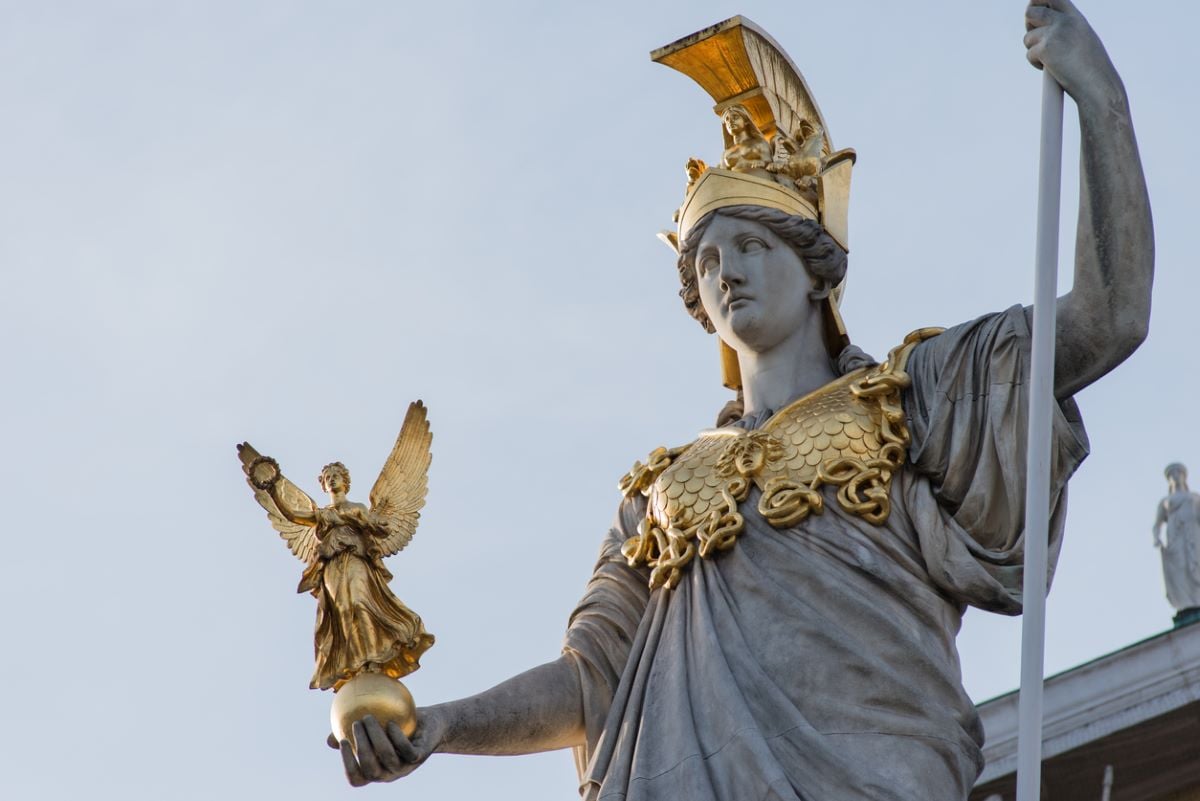
Statue of Athena, goddess of wisdom and the arts.
Photo: Dramatolog
Is there an Athena factor in creative arts?
It is becoming increasingly difficult to recruit and retain talent in the arts and cultural sector, particularly for women, writes Ri Chakraborty.
American artist Georgia O’Keefe once said: “To create one's world in any of the arts takes courage.” Never has this been more pertinent than in the past three years.
We are led to believe the purpose of art – in all forms – is to tell stories beyond the realms of gender and race, so why is there a disproportionately low number of women in the sector?
In science, a brain drain of female talent is known as the Athena factor: women leaving their careers, likely due to hostile or unsatisfactory workplaces. The name derives from Athena, goddess of wisdom and the arts.
A recent Deloitte report found the creative economy addresses social and cultural needs, presenting a diverse and representative range of human experience which aids social cohesion.
Women faced the hardest knock-backs
But with only one per cent of the National Gallery’s collection is art by women, perhaps Guardian journalist Katy Hessel has a point when she questions whether the industry has an issue with art that expresses the human experience through a female gaze.
Predictably, artists Gilbert and George begged to differ, angrily claiming museums were ‘woke’, metaphorically shaking their fists, complaining there is too much focus on black and women artists.
Although globally gender equality is improving, the creative sector lags behind. According to the Writers’ Guild in 2018, only 16% of UK women in film writers were female. And during the pandemic, as theatres and music venues shut, women faced the hardest knock-backs.
Women earn less money, win fewer awards and society is weaker because of it. Mainstream creative arts have a dramatic impact on the way younger women understand their identities and worth. Connection is a key facet, perhaps by strengthening a sense of self, along with the stability to work with others, truly inclusive, diverse representation will enable deeper engagement.
What if we look under the bonnet?
We are told that government recognises the need for a network of flexible and accessible routes into the creative industries, from early years education to adult reskilling, for people of all backgrounds.
However, with a 40% fall in arts entries at GCSE level since 2010 and major cuts to arts education, will the government convey how they intend to secure a steady creative talent pipeline, especially since we will be facing a creative arts skills shortage by 2025?
A Cultural Learning Alliance report recently reported that whereas the government offers bursaries of £20k to train to teach Biology and up to £27k to train to teach Chemistry. no such bursaries were offered for any arts subjects. This is despite the fact that “Music has a vacancy rate seven times higher than Biology and more than twice as high as Chemistry”.
This lack of financial opportunity smacks of the cliché of the impoverished artist suffering for her art and proves outdated: financial instability does not produce good art, just the suffering.
Resilient organisational interconnectivity
A survey from Looking Glass last year found long hours and resulting poor work-life balance were critical issues to address. Burnout drives high turnover, absenteeism and an inferior quality of projects.
To address this, we need resilient organisational interconnectivity and safer workplaces where women can thrive and flourish. Boards also have to take their governance responsibilities seriously; it’s not enough to just turn up to meetings. By becoming active listeners, trustees should call out discriminatory behaviour. We are all accountable.
As spring erupts, there are seeds of hope emerging. Across the UK, it’s heartening to hear of investment in film studios, sound stages and innovation. There are opportunities to champion and empower women in the sector through mentoring, training, inspiring, celebrating achievements and through finding allies and role models.
Enabling female creatives to climb the career ladder at their own pace and slip off a couple of rungs, if they need to, will only strengthen a burgeoning sector and harness the power of everyone’s creativity. Levelling the playing field so that women are encouraged to stay through to retirement, will only enhance our exciting industry and allow true equality in the business of culture.
Ri Chakraborty is a freelance Executive Producer and a member of the Governing Council at Norwich University of the Arts.
Join the Discussion
You must be logged in to post a comment.